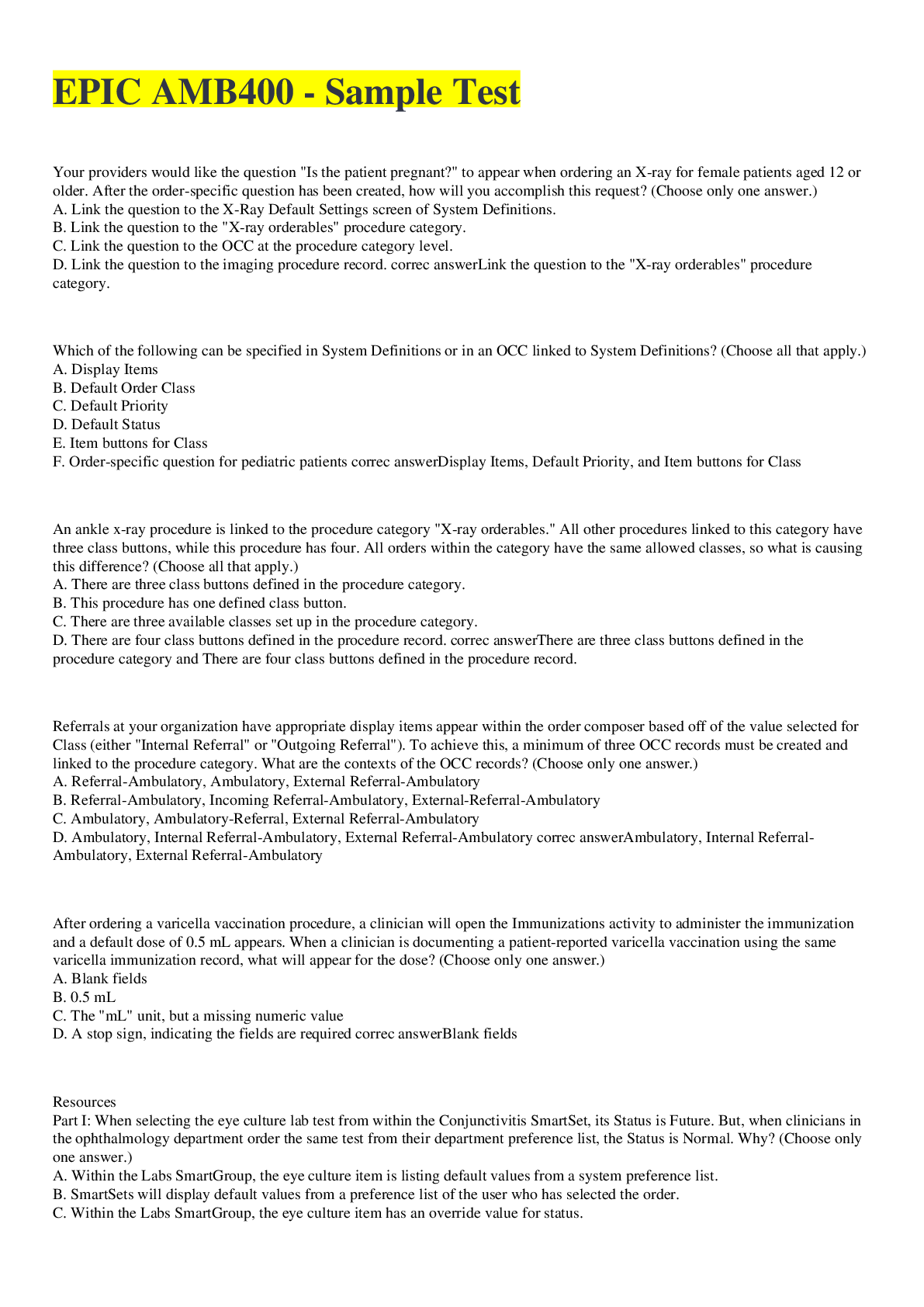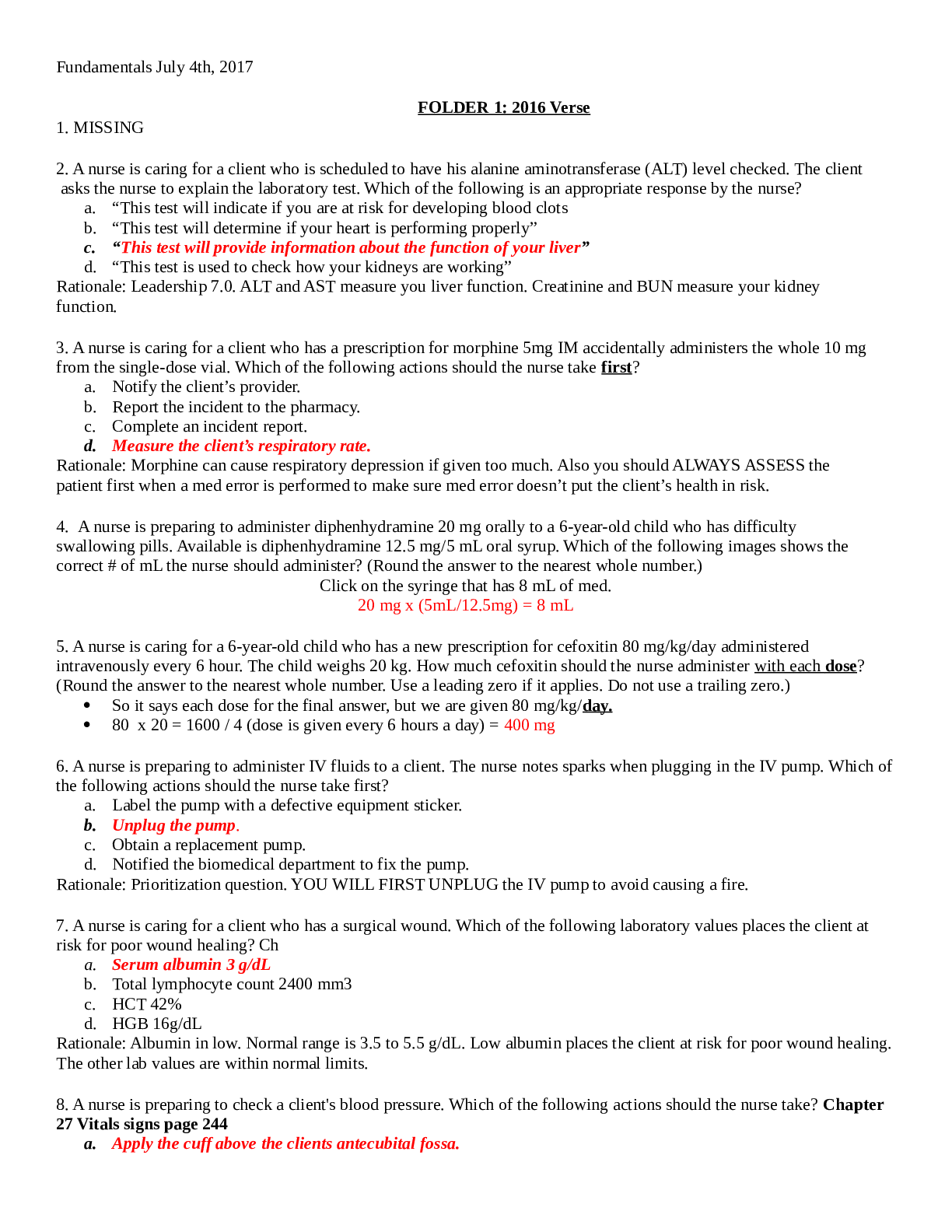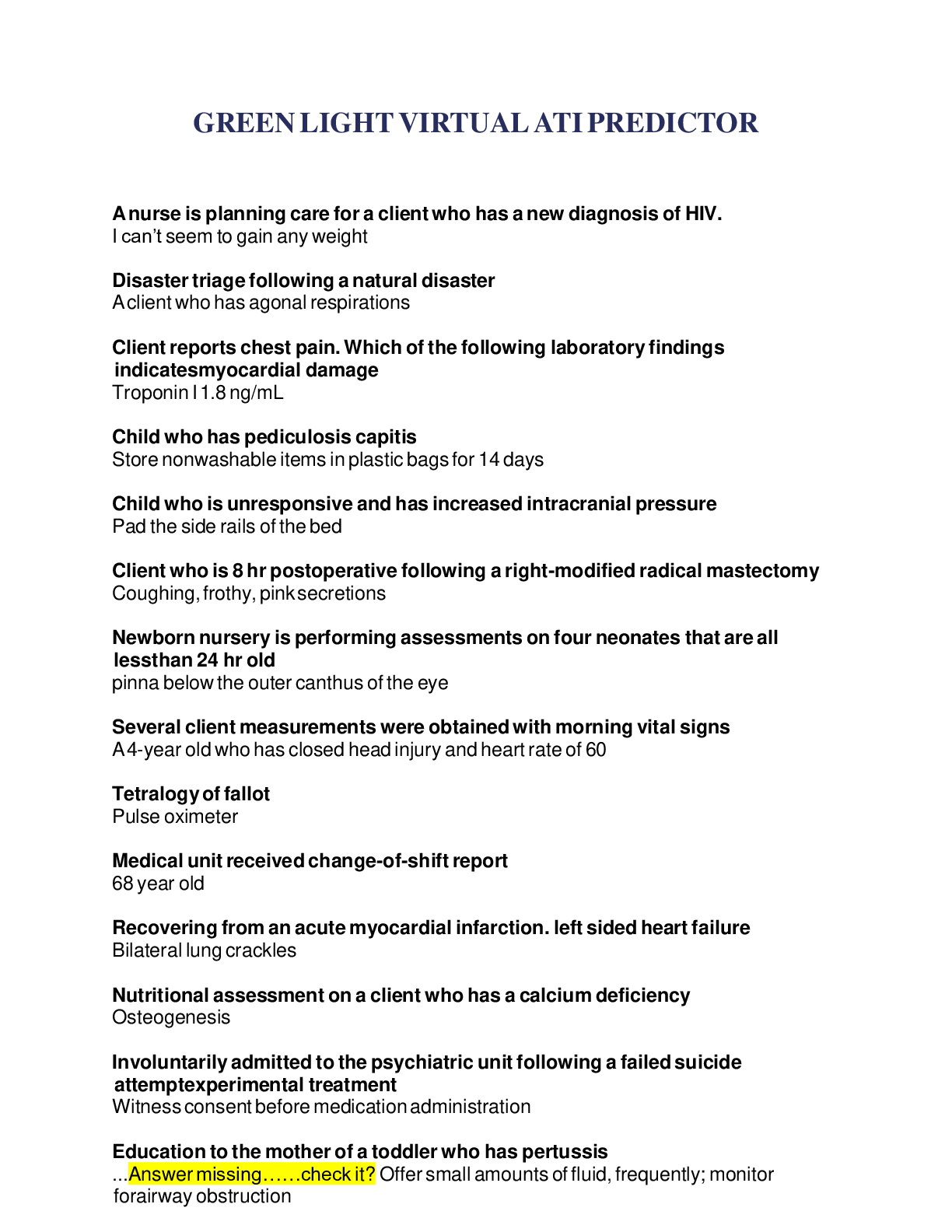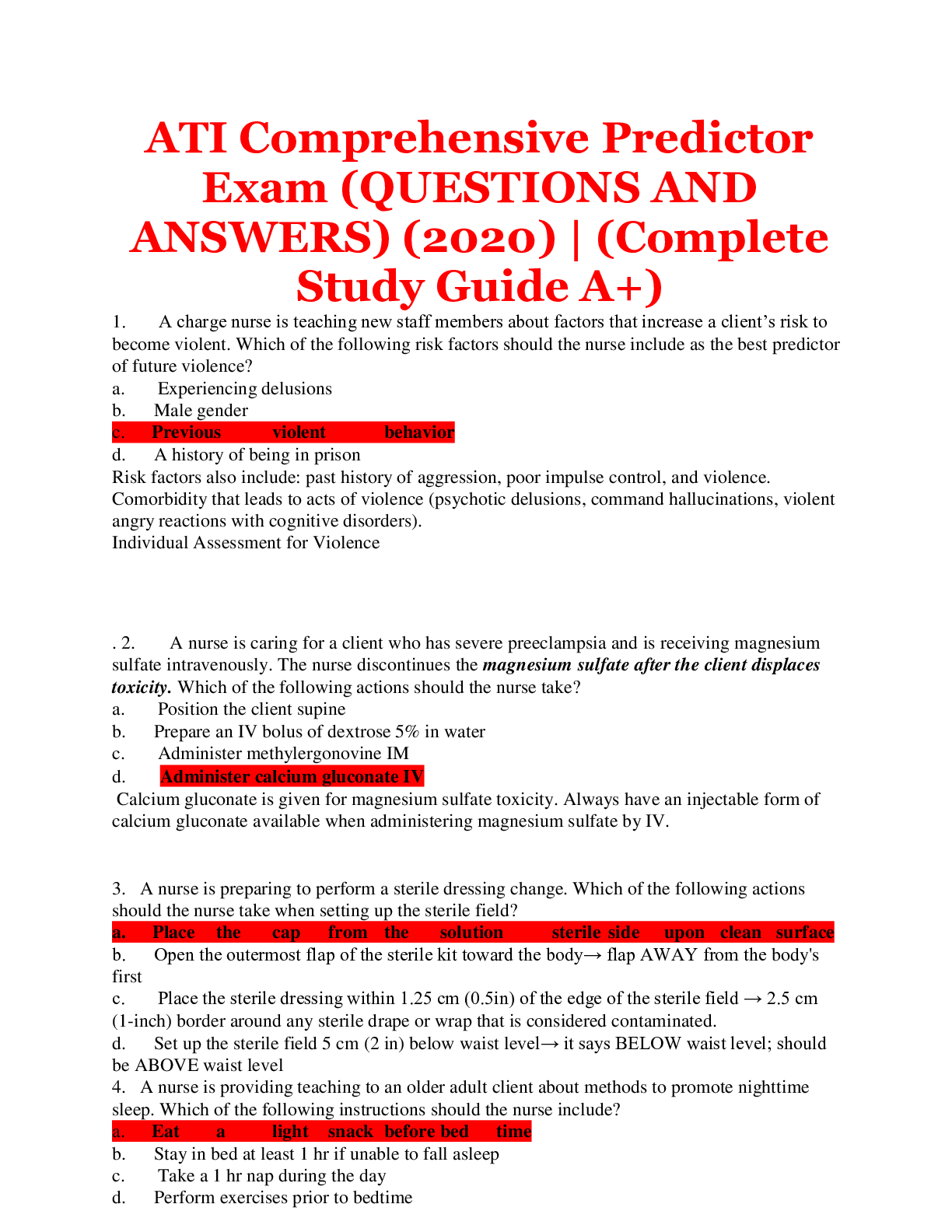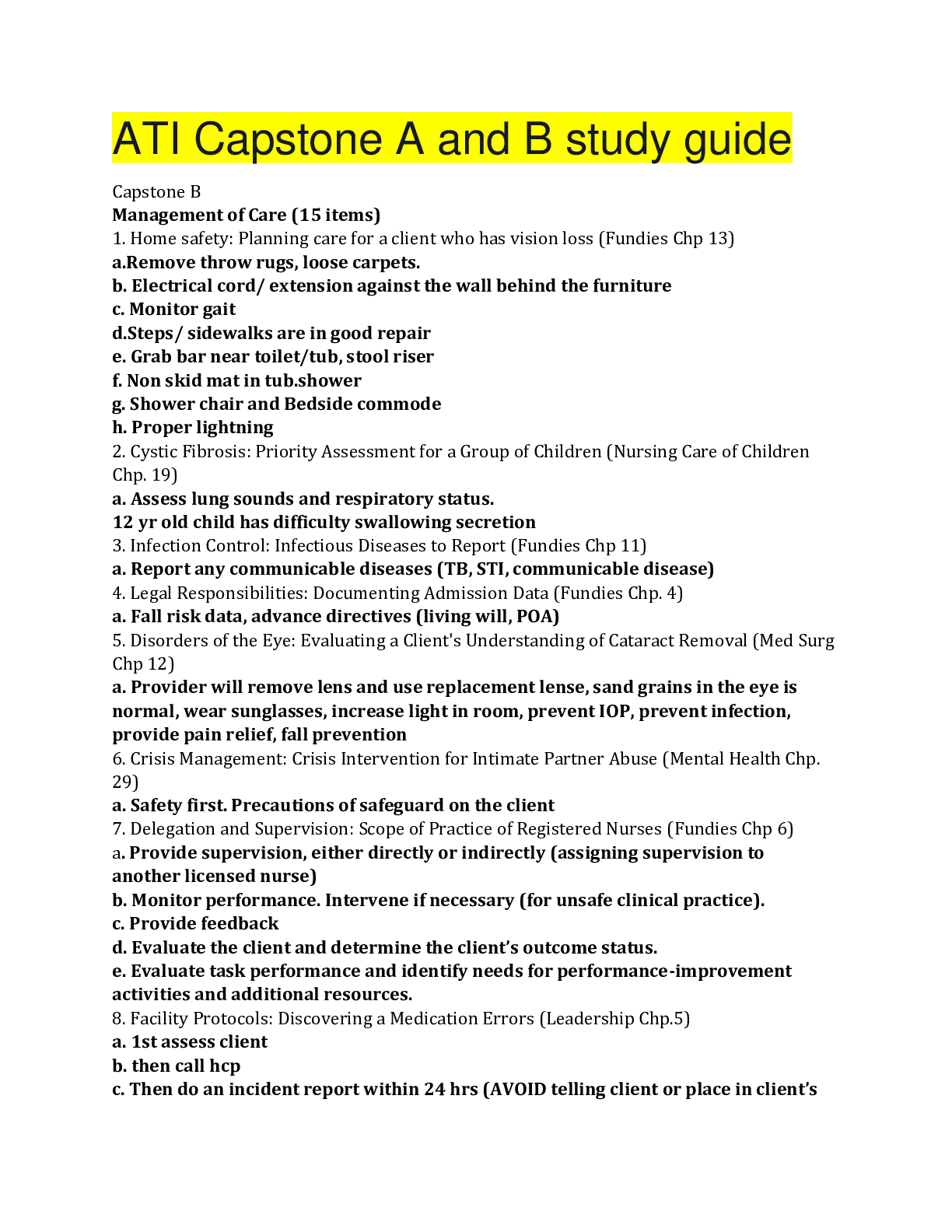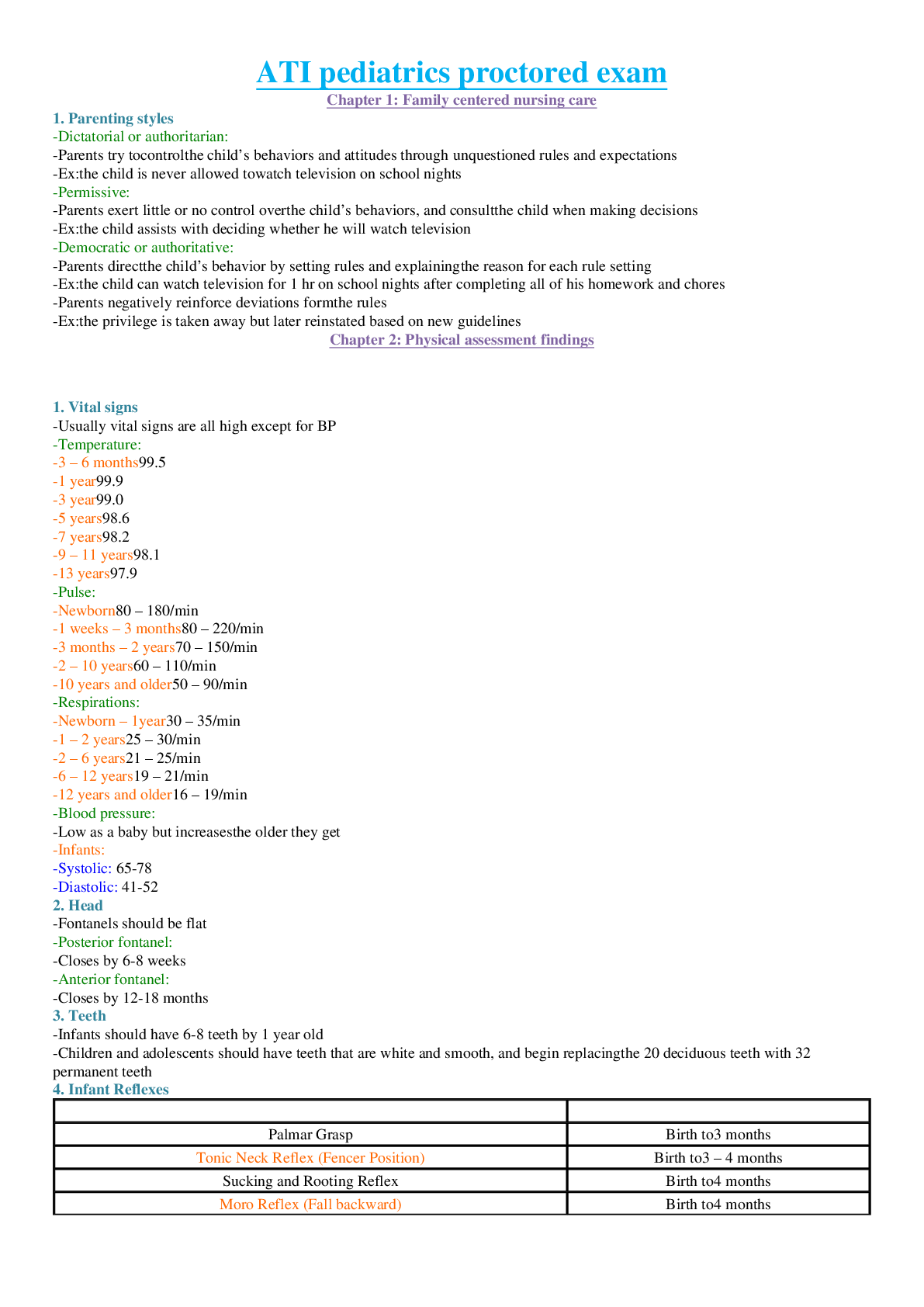Health Care > QUESTIONS and ANSWERS > EMT Lab Practical Review 2022 (All)
EMT Lab Practical Review 2022
Document Content and Description Below
Trauma Primary Assessment and History: Scene Safety Mechanism of Injury Number of patients Additional help if necessary Considers stabilization of the spine Verbalizes general impression of the ... patient AVPU – Level of Responsiveness Determines chief complaint/apparent life threats Opens and assesses airway Initiates appropriate oxygen therapy Insertion of adjunct if needed Assures adequate ventilation Injury management Assesses pulses (radial and carotid) and capillary refill Assesses skin (color, temperature, and conditions) Assesses major bleeding Controls major bleeding if needed Transport decision SAMPLE History Secondary Assessment: Head: Ears for battle signs, CSF, blood – Facial Area – Eyes - Scalp Neck: Inspects and palpates cervical spine, position of trachea, jugular veins Chest: Inspects, palpates, auscultates Abdomen and Pelvis: Inspects and palpates 4 abdominal quadrants, asses pelvis Extremities: Legs, Arms, PMS on both Posterior: Inspects and palpates posterior thorax, lumbar, buttocks Vital Signs Verbalizes reassessment of vital signs Demonstrates how and when to reassess the patient Accurate verbal report to arriving EMS Vital signs include – blood pressure, respiration rate, pulse rate, Medical Primary Assessment and History: BSI Scene is safe Nature of illness Number of patients Additional help Considers stabilization of the spine (verbalized) General impression of the patient (verbalized) This study source was downloaded by 100000851739762 from CourseHero.com on 09-06-2022 06:02:26 GMT -05:00 https://www.coursehero.com/file/13657711/EMT-Lab-Practical-Review/ . AVPU – Level of Responsiveness Chief Complaint/Life threats Opens and assesses airway Initiates appropriate oxygen therapy Assures adequate ventilation Assesses pulse and capillary refill Assesses skin Assesses major bleeding (blood sweep) Controls major bleeding Transport decision 1 point each: Onset, Provocation, Quality of the Pain, Radius, Severity, and Time with clarifying questions (2 pts) History: Allergies, Medications, Past Pertinent History, Last oral intake, Events leading to present illness Assess body part system Vital signs: Pulse rate and quality, Respiration Rate and Quality, & Blood Pressure State field impression of patient How and when to reassess the patient to determine changes Accurate verbal report to arriving EMS unit Oxygen: BSI Gathers appropriate equipment Cracks oxygen tank Attaches regulator Opens tank valve Checks oxygen tank pressure Checks and adjusts for leaks Chooses and attaches appropriate device for patients (NRB 10-15, Venturi, NC, Simple Mask) Chooses appropriate device for the patient (if NRB bag must fill first) Applies cannula/mask to patient and adjusts Just loss consciousness- Remove device Open Airway (Heat-tilt or Jaw Thrust) Assesses breathing (5-10 seconds) Pulse (5-10 seconds) Requires additional EMS assistance Airway occluded: Attach suction catheter to suction device Measure proper catheter length Turn on suction apparatus Open mouth Insert catheter without applying suction Applies suction for no more than 15 seconds Apply suction on withdrawal only Reopen airway Reassess airway and breathing (5-10 seconds) This study source was downloaded by 100000851739762 from CourseHero.com on 09-06-2022 06:02:26 GMT -05:00 https://www.coursehero.com/file/13657711/EMT-Lab-Practical-Review/ Apneic but not gurgling – BVM to O2 resevoir and set correct flow rate Ventilate with BVM Recheck for pulse every 5-10 seconds Select and measure correct size OP/NP Insert OP/NP correctly Ventilate patient adequately Bleeding Control Shock Management: BSI Direct pressure to the wound for 2 minutes Apply tourniquet Checks distal pulse to confirm pulse Position the patient who experiences hypoperfusion Apply high concentration oxygen Initiate steps to prevent heat loss Immediate transport Splinting: ankle, foot, knee, wrist, hand, elbow, shoulder Radius, Ulna, Humerus, Tibia, Fibia BSI Directs manual stabilization of injury Assesses PMS Selects proper splinting material/Measures splint Applies splint Immobilizes injury Immobilizes above and below injury Secures the entire injured extremity Reassesses PMS Shoulder – Sling and swathe Humerus – Single board on lateral aspect, wrist sling, and swathe Elbow – A frame if angulated short board if straight Forearm – Single board, sling, and swathe WATCHED Hand holds kravatte Board under the arm Stabilize arm Tie elbow and wrist to the board Board to the neck so it’s a sling (one against the chest and other on other side of neck) Tie sling off Wrist – Single board with ample padding, sling, and swathe Hand – Single padded board or pillow, splint in position of function Femur – Traction Splint Knee – A frame if angulated, padded boards if straight This study source was downloaded by 100000851739762 from CourseHero.com on 09-06-2022 06:02:26 GMT -05:00 https://www.coursehero.com/file/13657711/EMT-Lab-Practical-Review/ Tib/Fib – Padded boards Ankle/foot – Pillow splint Spinal Immobilization Supine BSI Directs assistant to maintain head in neutral in line position Directs assistant to maintain manual immbolization of the head Assesses PMS in each extremity Applies appropriately sized C-Collar Position the immobilization device behind the patient Directs movement without compromising Immobilizes the patient’s torso to the device Evaluates and pads behind the head as necessary Immobilizes the patients head to the device Secures the patients legs to the device Secures the patients arms to the device Reassesses PMS in each extremity [Show More]
Last updated: 1 year ago
Preview 1 out of 4 pages
.png)
Reviews( 0 )
Document information
Connected school, study & course
About the document
Uploaded On
Sep 06, 2022
Number of pages
4
Written in
Additional information
This document has been written for:
Uploaded
Sep 06, 2022
Downloads
0
Views
31


.png)
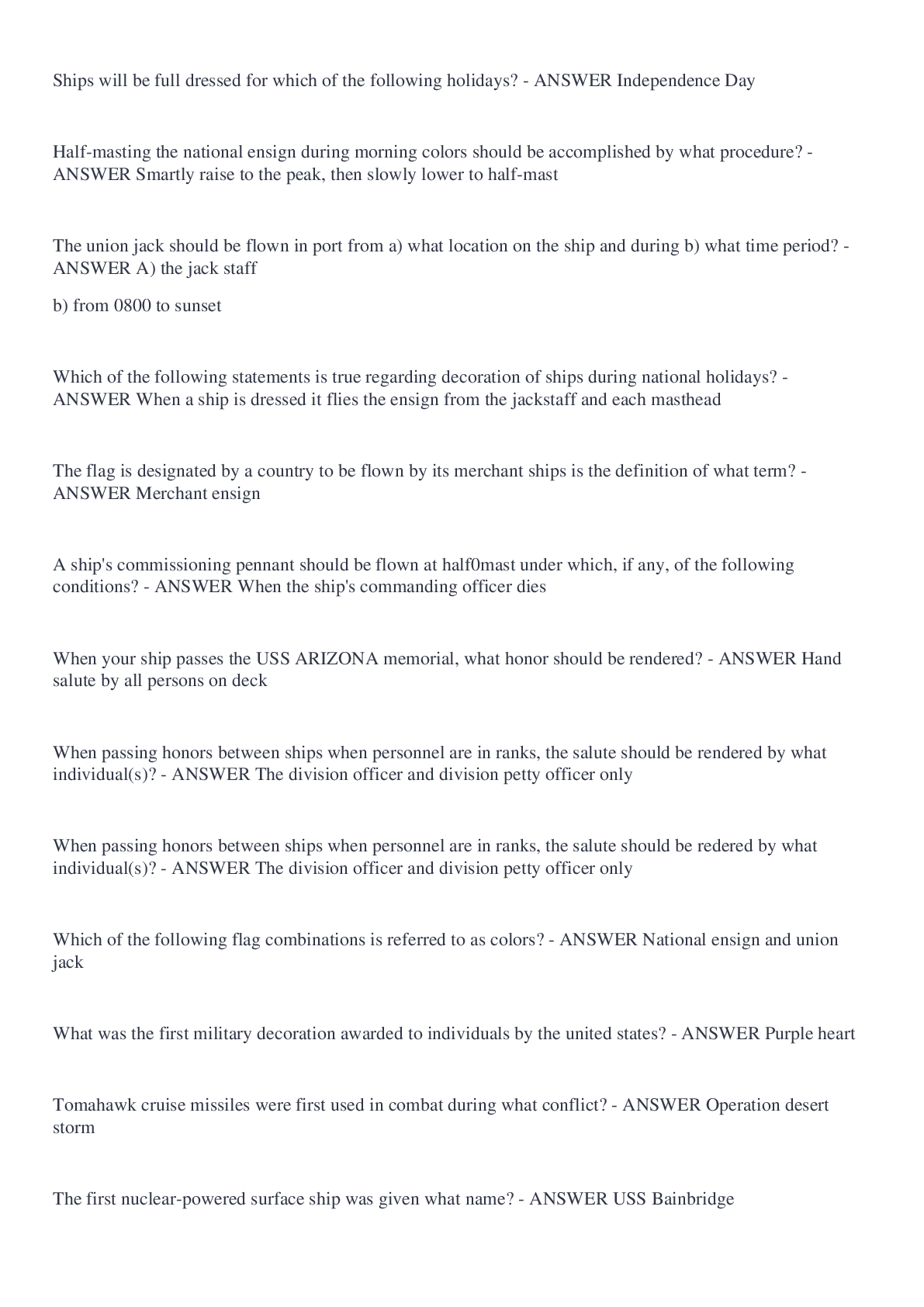
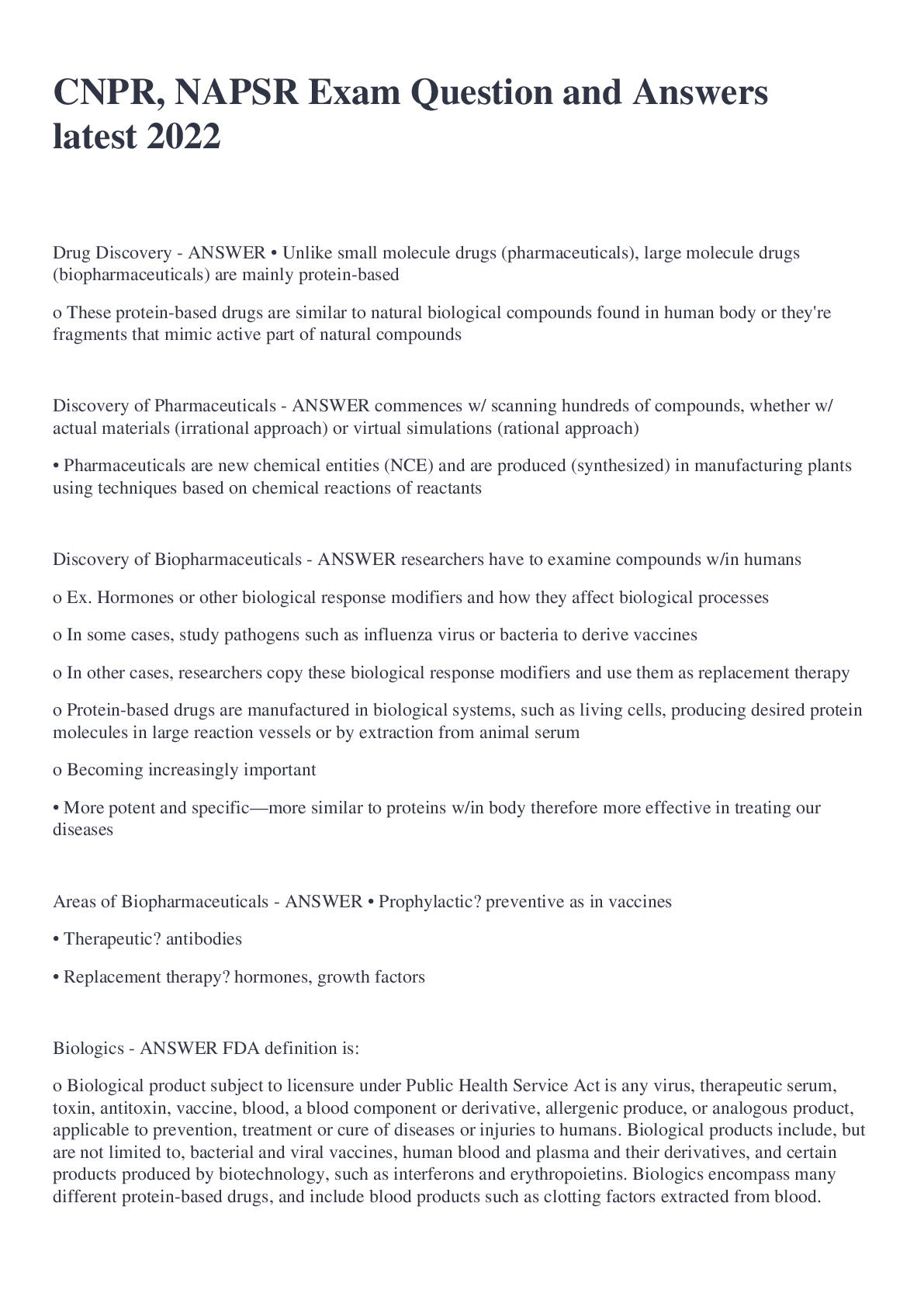

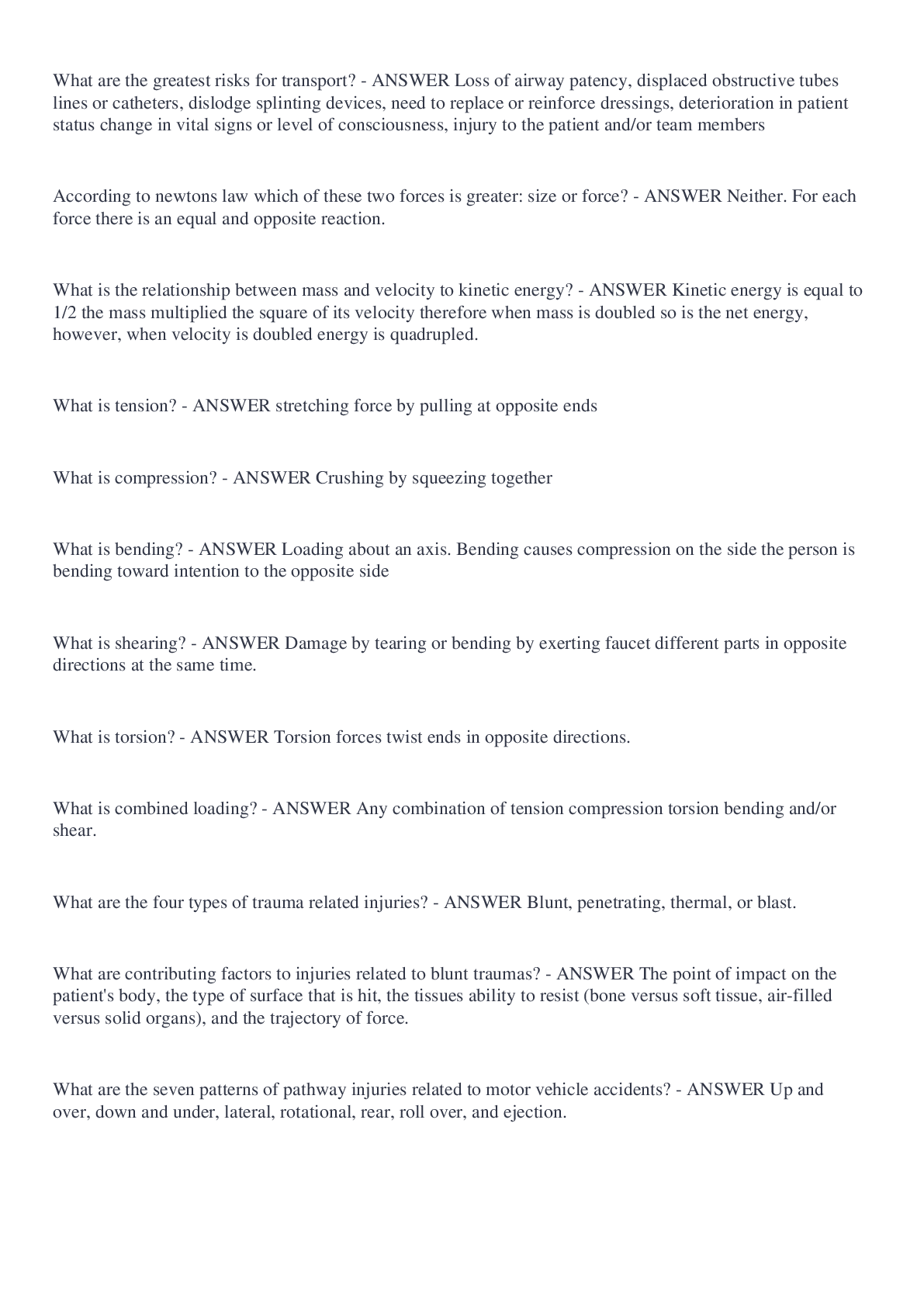

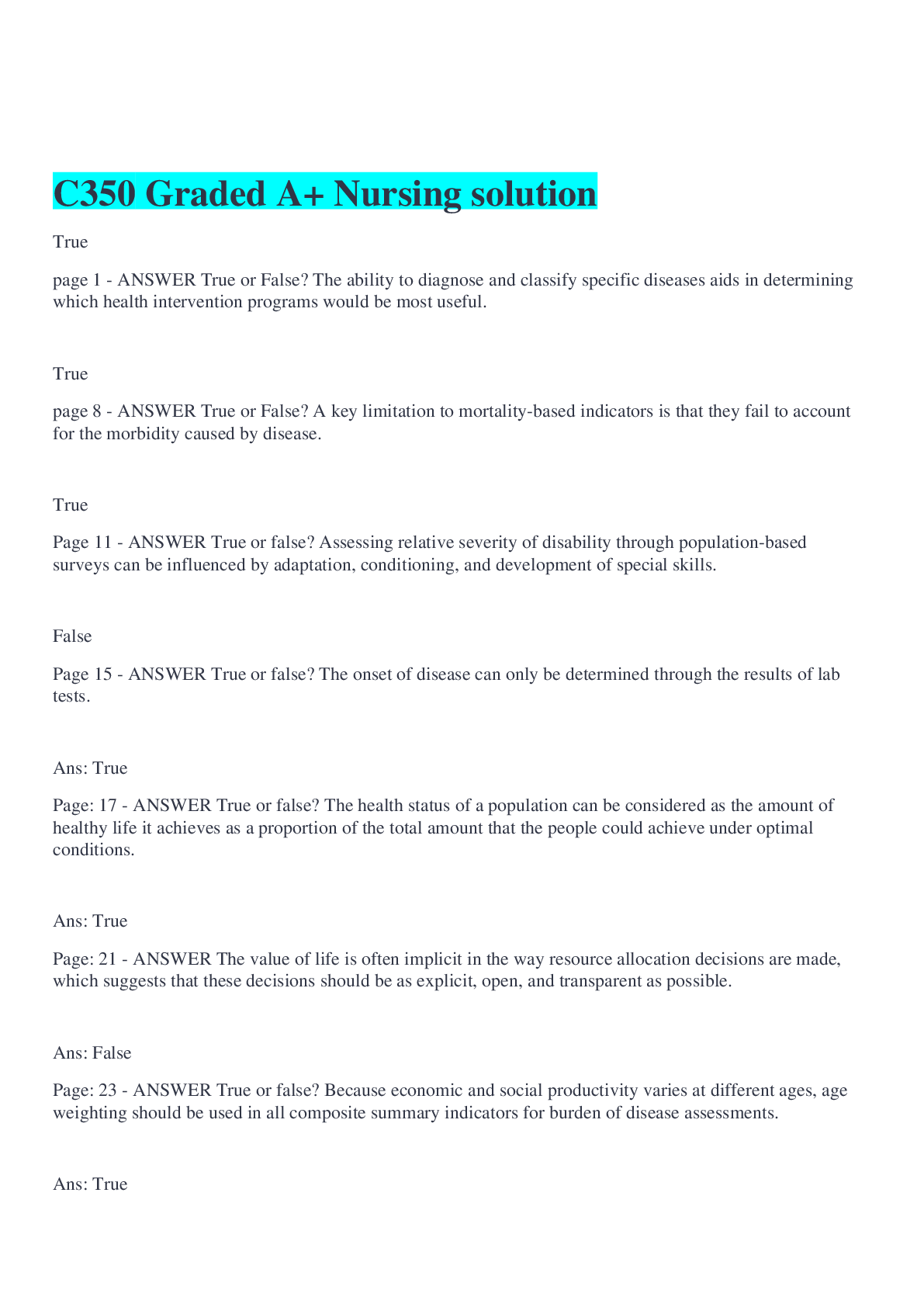
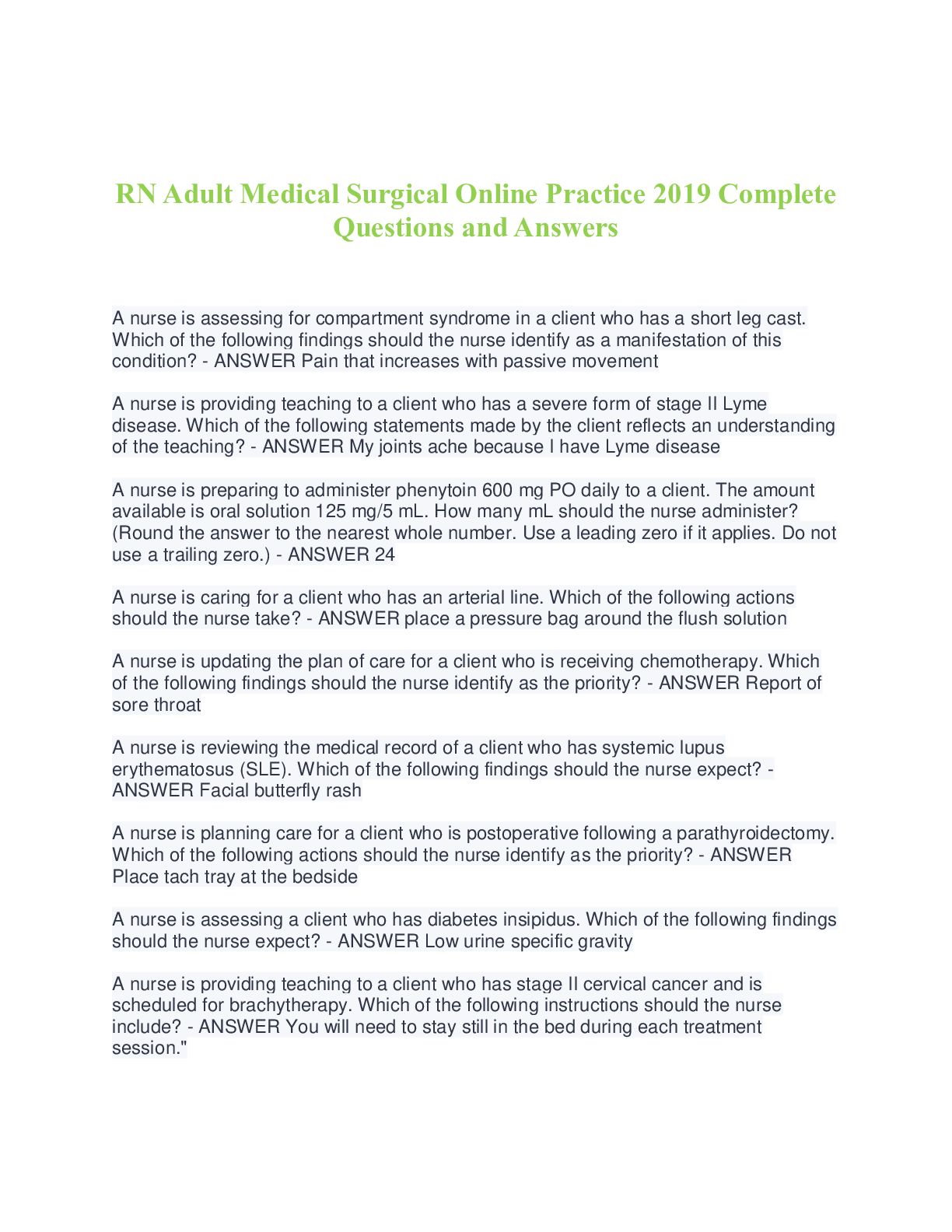

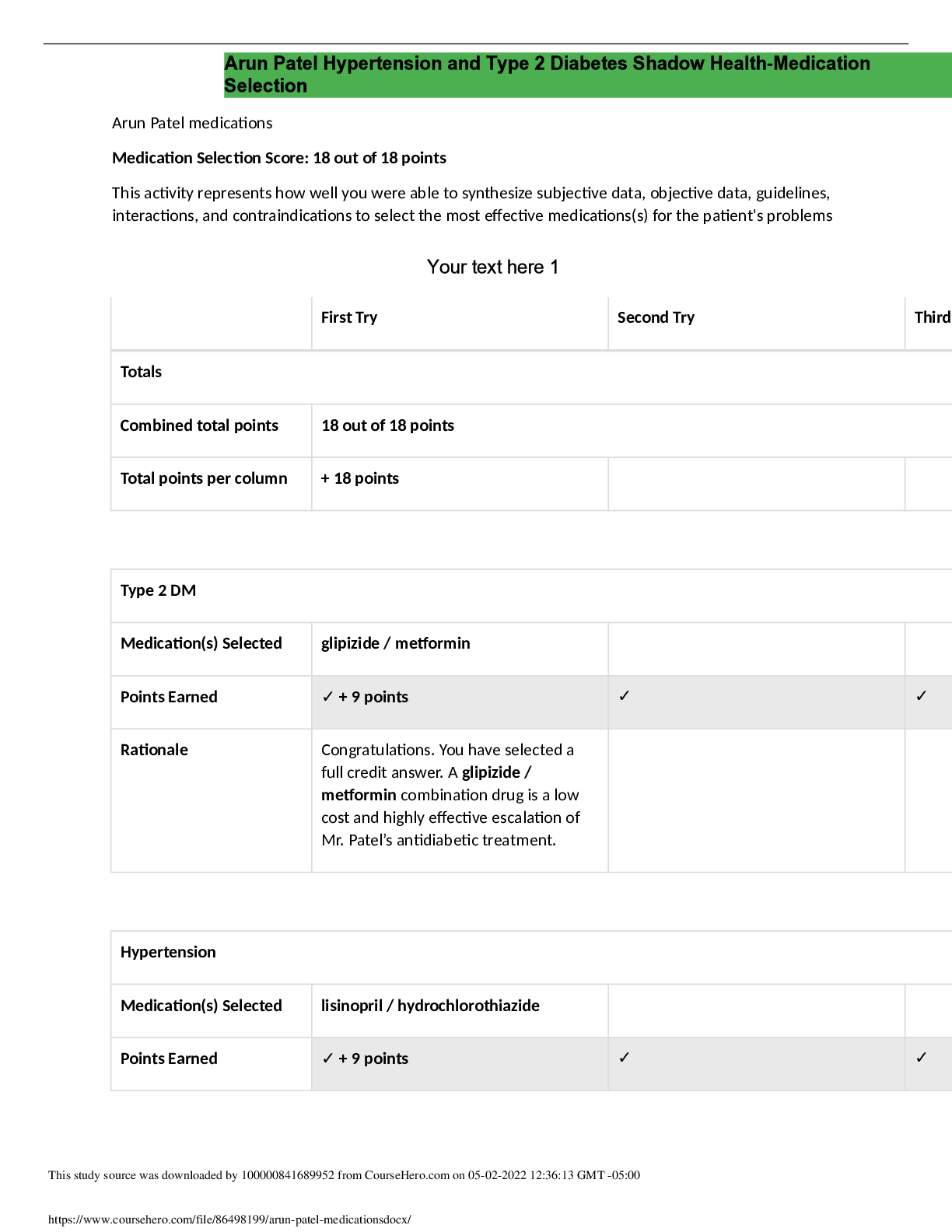

.png)

